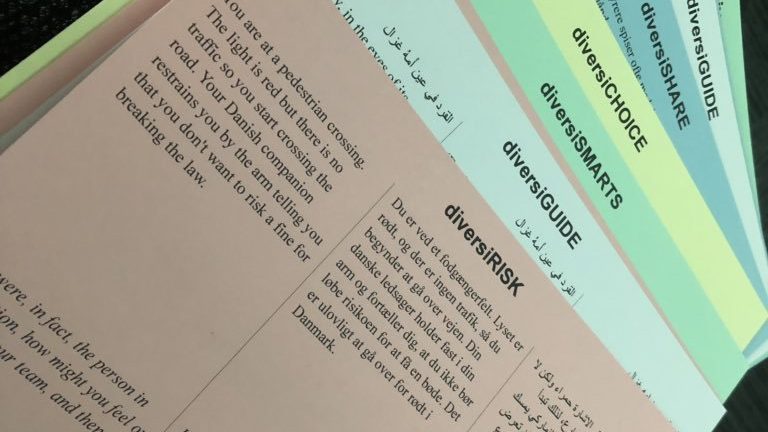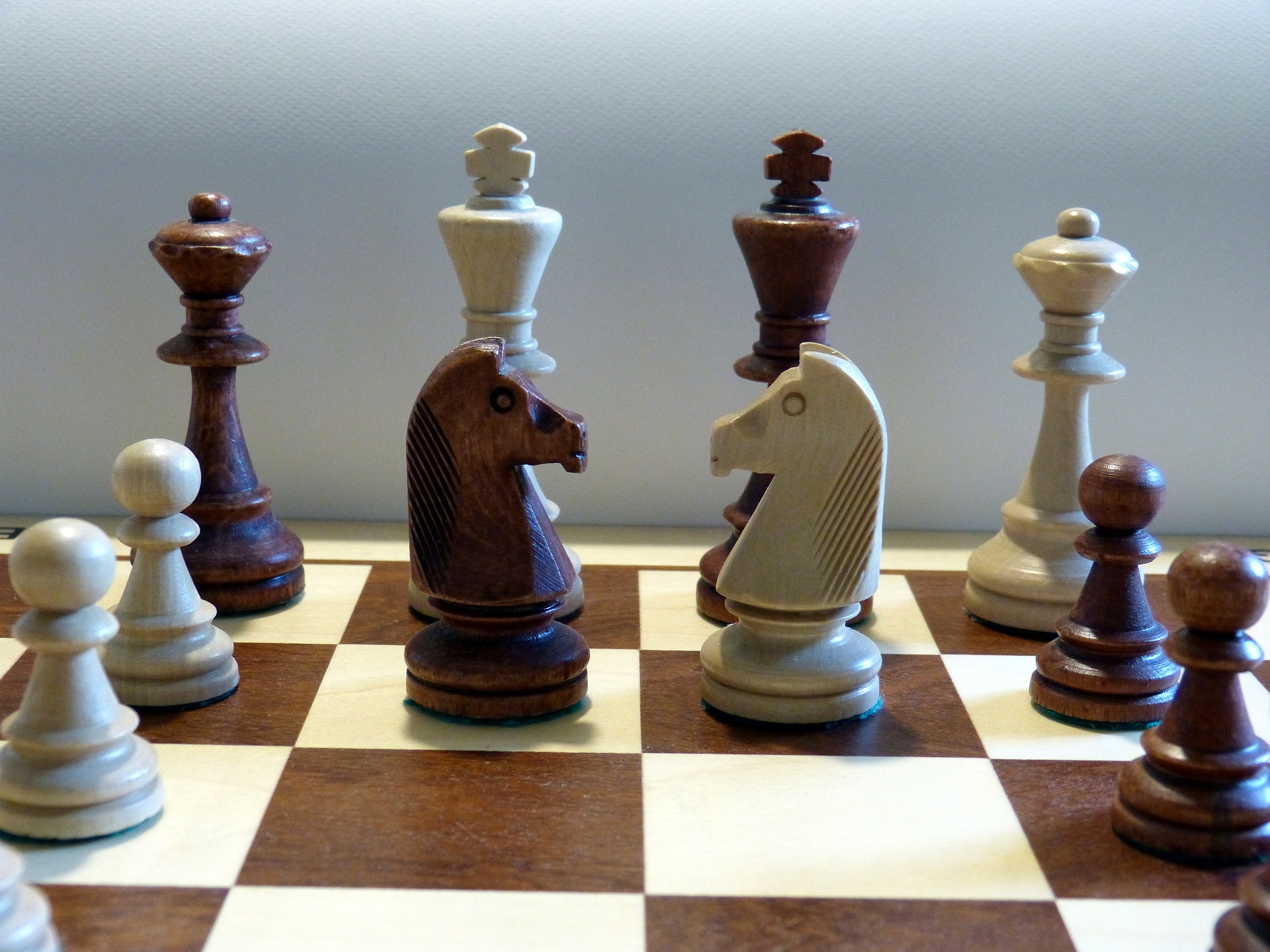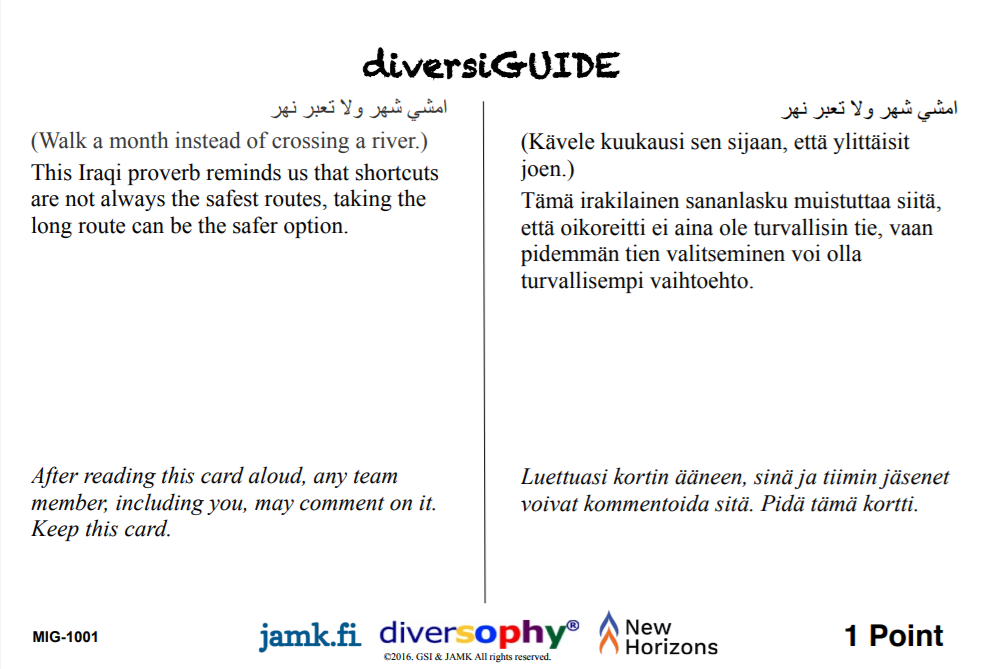Category: Teaching Culture
-

Funding as a game
Having spent the last two years developing the diversophy migrant game for Denmark, I was invited by George Simons to help facilitate his pre-Congress workshop on gamification of intercultural training at the SIETAR Congress in Belgium in May. One of my slots was to describe how we got funding to develop the Danish version of…
-

Presenting the diversophy migrant edition
Delegates at the IATEFL conference in Liverpool in April had the chance to try out the diversophy migrant game. It certainly led to conversation and dialogue, the prime intention of the game, when I heard comments such as the following during the game: Well I would never call my teacher by their first name so…
-

Dialogue to bridge differences
What is a virtual exchange? Maybe not what you think. We dig deeper into that in this special edition of Absolutely Intercultural coming to you from Denmark. The latest show is mainly about promoting dialogue between different groups of people. So what is dialogue? And can you tell the difference between dialogue and, for example,…
-

Using games in conflict resolution
This book caught my eye based on the title alone “The Big Book of Conflict Resolution Games: Quick, Effective Activities to Improve Communication, Trust and Collaboration” (Big Book Series) by Mary Scannell. The book is not aimed at the adult education sector nor the intercultural communication sector. So once again, I am left wondering which…
-

Don’t forget the classic tools
In the last few posts I have been exploring different facets about how to resolve conflict in the diverse adult education classroom. This mainly revolves around taking the intercultural aspects into consideration such as tolerance for ambiguity and the role of the teacher (leader) in the classroom. This post is a reminder not to forget…
-

Reducing ambiguity
In the last post I made a case for not only the teacher but also the students to increase their tolerance for ambiguity. I suggested the following approach: ask about and clarify when behaviours are unexpected. even better is to anticipate misunderstandings and to make as much clear from the beginning as possible. there is…
-
The agony of ambiguity
One of the major intercultural competences is a tolerance for ambiguity. This means being open to different interpretations of what you observe and experience. Without awareness, we are likely to feel embarrassed or uncomfortable when people behave in unexpected ways. We are also more likely to attribute negative motivations such as They are doing this…
-

Impartial justice or relationship repair?
In his book ‘The World Until Yesterday’ Jared Diamond examines conflict resolution in societies at different scales and makes the point that at small scale, conflict resolution is about relationship repair whereas in state-level societies, conflict resolution is more about formal and impartial structures of justice between strangers. He sources his examples of small scale…
-

Visible thinking to reduce conflict
Seeing this wonderful video made me wonder if visible thinking routines could help to reduce conflict in the diverse adult education classroom? Visible thinking is being used to professionalise the learning process, not only for the teachers but for the students too. I am impressed to see such young students thinking at such a meta…
